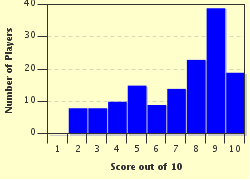Quiz Answer Key and Fun Facts
1. Let us start with Queensland which is the second largest state with a coastline stretching nearly 7,000 kms. The capital, Brisbane, is flanked by the surfer-friendly beaches of which coasts?
2. Heading south to New South Wales we come to one of the most beautiful cities in the world, Sydney. We have all heard of the Opera House, Sydney Harbour Bridge, Bondi Beach etc., however, what is the name of the dissected plateau, carved from sandstone bedrock, that lies within 100 kms of Sydney?
3. Melbourne (Victoria) is not only the financial capital of the country but also the sporting "mecca" of Australia with the Formula I Grand Prix, Australian Open Tennis, MCG and the home of the National Sports Museum. However, let us travel west from Melbourne along the scenic Great Ocean Road and see a group of limestone stacks. What are these stacks known as?
4. Let us head across Bass Strait to the island state of Tasmania, known colloquially as "Tassie". The island is the home of the largest carnivorous marsupial in the world. What is the name of this animal which is only found in the wild of Tasmania?
5. We now head to Adelaide (South Australia) which is known as "The City of Churches". South Australia is a state defined by extreme wilderness yet north-east of Adelaide is a region that can wet your appetite. What is the region known as?
6. Western Australia is the second-largest country subdivision in the world and has a coastline of nearly 21,000 kms. Besides rolling white beaches, rugged coastlines, fishing sports and national parks, it is also home to around 540 species of birds. Which one of these birds is the state's bird emblem and appears on the state flag and Coat of Arms?
7. The Northern Territory has been the home to indigenous Australians for over 40,000 years. It is a dry and arid territory but has its own beauty. In which park, only 170 kms east of Darwin, would you find breath-taking views of wetlands and hundreds of native animals?
8. Let us now visit our capital city, Canberra, in the Australian Capital Territory (ACT). This neutral site was chosen as there was great debate between Sydney and Melbourne as to which should be the capital city. Following an international competition whose design of this new city was chosen?
9. Australia has seven external territories and six of them have the Southern Cross on their flag. I am the exception as I was colonised in 1788, served as a penal colony until 1794 and have the symbol of a tree on my flag. Who am I?
10. On the Australian coat of arms, what is used as the "compartment"?
Source: Author
zambesi
This quiz was reviewed by FunTrivia editor
Tizzabelle before going online.
Any errors found in FunTrivia content are routinely corrected through our feedback system.

